Image Processing
Digitized pictures allow the use of the computer to enhance certain information
in the raw data. I have two examples here. In the first one the brightness
decrease on the disk of the planet jupiter is to be compensated for. Why
is this necessary ? The contrast of some cloud structures on jupiter is
in a very small brightness intervall. If I take this intervall as it is
at the center of jupiter's disk then the brightness of the edge of jupiter
will be out of this range and therefore detail in those areas won't be
visible. It is advised to have the brightness variation due to edge darkening
removed from the picture prior to enhancement of cloud structures. For
this purpose a small programm was writtem that simulates the brightness
variation on an arbitrary ellipse.
This is an example:
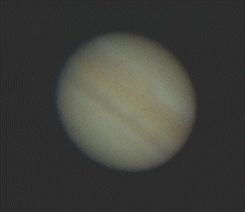
A. Nikolai
10cm refractor raw data
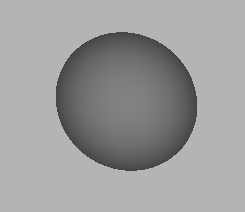
The mask fitted to compensate for the brightness variation across the
disk.
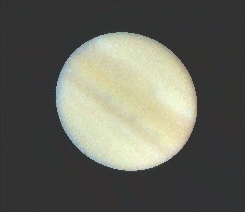
Raw data divided by the mask.
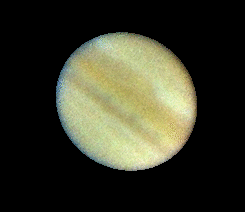
Contrast streched to optimum.
Solar eclipses
Another area where compensation of large brightness variations is interesting
is in total solar eclipse photography. The solar corona visible during
such an event has a very large brightness gradient. Small radial brightness
variations are drowned in the overall brightness distribution an become
invisible at first.
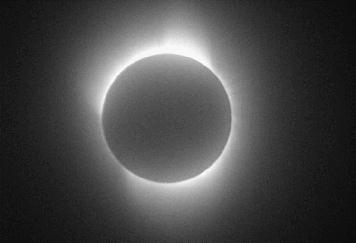
D. Hartmann
raw data from 256 digitized video frames. There are no radial streamers
visible. From this picture a radial filter mask was produced.
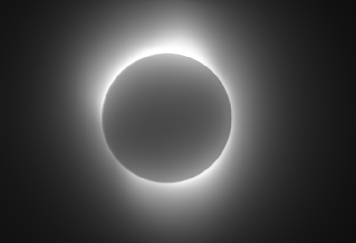
The radial mask. Only large scale structures are visible.
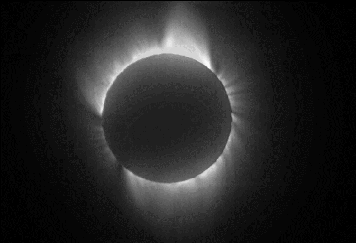
The raw picture was divided by the mask and streched to the optimum
contrast range.
Back to my home page







